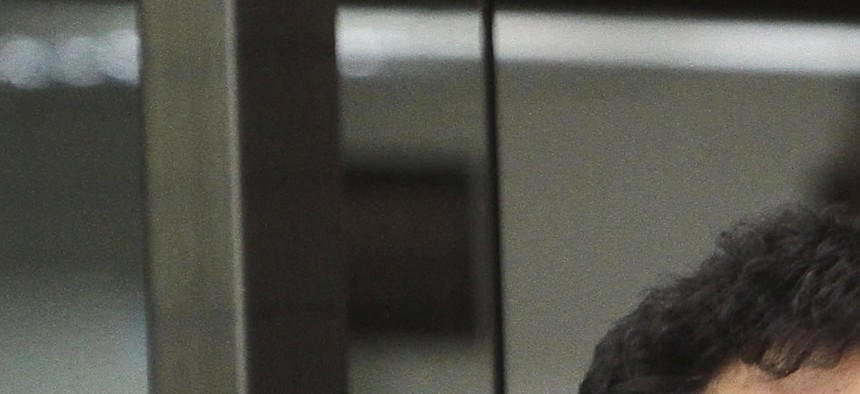
People cover up to protect from bird flu in Taipei, Taiwan, Friday, Apr. 26, 2013. AP Photo/Chiang Ying-ying
How the Military’s Bomb-Detecting Lasers Will Protect You From the Flu
High-powered, small and cheap UV lasers could detect biological containments of the lethal or simply annoying variety. By Patrick Tucker
Today, in many cases, a chemical or dirty bomb attack is a more likely threat to American soldiers than conventional bombs dropped from planes. For that reason, the Defense Advanced Projects Research Agency, or DARPA, is sponsoring a program to build small and powerful ultraviolet, or UV, lasers that could detect dangerous chemicals and biological agents and protect troops at safe distances. The same technology could one day protect you from the flu floating around the office.
The program is called Laser UV Sources for Tactical Efficient Raman, or LUSTER.
First, to the battlefield. The military already has a number of different options for chemical or biological detection. None of them quite work in the way that the military needs. DARPA wants a laser that is small enough for a soldier to carry and can detect chemicals and agents at a range of ten meters. “Right now our detection capabilities are point detectors,” said Daniel Green, a DARPA program manager, speaking at Tuesday’s proposer’s day meeting. If you’re looking for a dangerous biological agent, he said, “and you’re an inch away, it doesn’t help you a whole lot.”
The military is after a deep UV laser in the wavelength range of 200-240 nanometers. The laser wavelength range refers to where on the electromagnetic spectrum it falls. So-called excimer laser technology works at that wavelength or lower, has been around for decades and is commonly used in eye surgery and for carving microchips. But the smallest of these units is too big and clunky for what the military wants to field. Excimers are desktop size, at the smallest, said Green. DARPA is looking for something in the same deep UV wavelength range that’s extremely compact -- two cubic inches for the entire unit.
The success of a recent Compact Mid-Ultraviolet Technology, or CMUVT, program laid the basis for the current search. The CMUVT program resulted in small UV devices to detect a variety of biological entities by using machines much smaller than what previously had been considered state of the art. “We looked at potential applications [and] one of the primary ones was bio-aerosol detection,” said Michael Wraback, of the Army Research Lab. “The most recent CMUVT devices could see ovalbumin, a stimulant for viruses and toxins.” Ovalbumin is a protein that serves as a good proxy for lots of different types of biological agents.
That’s one reason why UV lasers have applications well beyond the battlefield. “What we really want to do is create breakthrough laser tech for a variety of applications,” said Green. Perhaps the most useful of these is virus or bacteria detection in civilian settings. The military is continually researching the best way to stave of a scenario in which a biological agent, one that was extremely potent in small doses, was released over a large area. The ability to detect chemical markers in very small doses could save millions of lives in the event of some sort of Mission Impossible II scenario.
It could also, one day, save you from the flu.
In much the same way that these lasers could be deployed to find sarin gas, they could also be distributed in schools, office buildings and airports to spot viruses that civilians are carrying if someone can make them much cheaper and more powerful.
That may not sound terribly important to national security but consider that a major disease outbreak could kill millions of people, particularly in the developing world or places where a lot of people have crowded together in cities with poor sanitation infrastructure. Take a simple flu strain like H5N1, or bird flu. This particular flu is not considered as big a threat as it was back in 2006, but a pandemic with a mortality rate of 60 percent, similar to H5N1, could result in between 5 million and 150 million deaths. The ability to detect the pandemic quickly makes the difference between the five and 150 million. In urbanized environments where flu spreads fast, that early detection isn’t easy.
Can handheld, powerful UV lasers in the 220 to 240 nanometer range detect flu moving among a civilian population? David Sickenberger, a research scientist with the Army Edgewood Chemical Biological Center, made a point to say that the technology he worked on, the CMUVT program, was intended to help soldiers in the field, not detect the flu, but that “it’s got a wide range of applications and that’s certainly one.”





